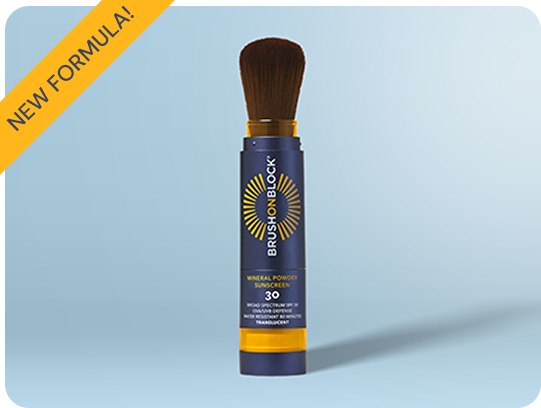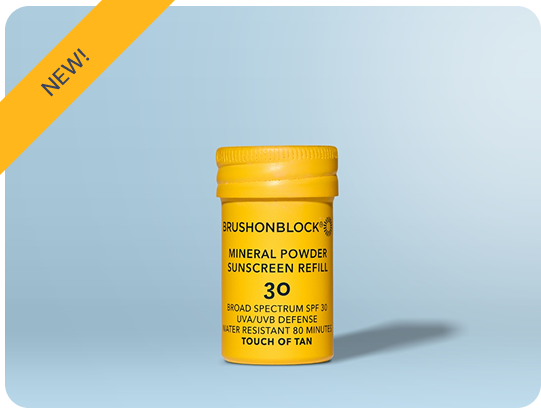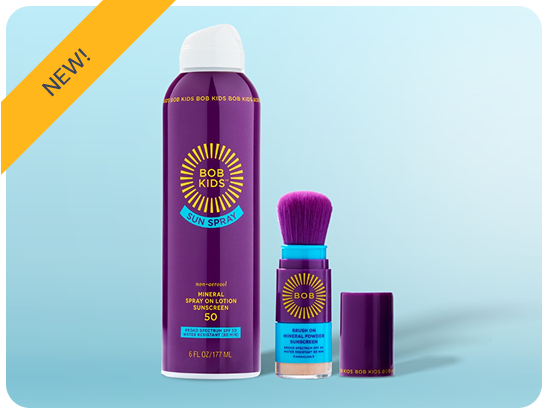
As parents, we know protecting our kids from the sun is important—but doing it consistently? That's a different story. We spoke with Dr. Elizabeth Berry, a board-certified dermatologist and mom to a preschooler, about what really works when it comes to sunscreen, sun safety habits, and raising kids who (hopefully) apply SPF without a battle.
Why Early Sun Protection Is Critical
Dr. Berry explains just how high the stakes are for kids: "The biggest risk factor for melanoma later in life is the number of sunburns you get as a child. If you can keep your kids from getting sunburned, that's a huge investment in their future cancer risk."
She notes that while skin cancers are rare in children, it can occur. "Melanoma and other skin cancers are extremely rare in children, but they do happen. Post puberty is when we see melanoma risk increase. Unfortunately, melanoma is one of the most common cancers of people in their teens and 20s." If you have questions on how to identify a potentially concerning spot on your child, you can find more information from the Society for Pediatric Dermatology.
For younger children who can't grasp the concept of cancer risk, Dr. Berry suggests focusing on the immediate consequences: "More than skin cancer, younger children can understand that sunburns hurt a lot. And maybe that's what you focus on to get the sunscreen on—avoiding the burn instead of this nebulous, slightly scary concept of skin cancer risk."
Making Sun Protection Routine
Dr. Berry has noticed a positive shift in family sun protection habits. "We are frequent playground attendees, and I'm impressed to see the number of parents out there who have lots of sunscreens that they're applying to their children. I feel like the messaging is getting out there, and I hope we'll continue to move that forward."
In her own household, sunscreen application focuses mainly on "independence and control," she says. "My preschooler wants to do everything herself now, and so anything that I give her that she can apply by herself, reliably, is really helpful. She's starting to get better with applying sunscreen."
Her tip for minimizing resistance? "It comes down to, how much choice can you give your children? How much control can you let them have? If you offer them a few options and let them pick the one to use, it usually goes better."
Using the UV Index as Your Guide
Even when it's cloudy or chilly, UV rays are still at work. In the Berry household, a UV index over 2 means it is time to put on sunscreen, even if it’s cloudy.
"Do I need to commit to the full sun protection and glop on sunscreen at 5:30 in the afternoon in June, or can we get away with just putting on a hat and a sunshirt? Or can we get away with nothing at all? It's a nice guide to help you understand how much sun protection to layer on and how much trouble it is going to be to get out the door."
She continues, "We try to understand the level of risk. How sunny is it outside? A cloudy February day vs swimming in the middle of summer can mean the difference between choosing a hat and going full-send on the sunscreen, hat, sun protective clothing, and avoiding being outside in peak sunny hours.”
For her family, sun protection is "a non-negotiable. We talk about how we don't want you to get sunburned, because mommy's a skin doctor. I get to use that leverage."

Choosing the Right Sunscreen
Dr. Berry explains the key difference between sunscreen types and how they work: "Mineral sunscreens—those with zinc oxide or titanium dioxide—both absorb and reflect UV rays. Chemical sunscreens have a particular chemical structure that absorbs UV radiation. Both work, but only mineral ingredients are currently classified by the FDA as generally recognized as safe and effective or GRASE.”
When patients express concerns about sunscreen safety, Dr. Berry has clear advice: "My spiel to my patients is, the two ingredients that the FDA says are generally regarded as safe and effective are titanium dioxide and zinc oxide. We also know that those are reef safe. We know the ones that we call 'chemical sunscreens’ do have some evidence that they absorb into the bloodstream. We don't know what that means, those studies haven't been done in the long term. But the zinc oxide and the titanium dioxide ones don't get absorbed and so if you're worried about those things I would go for the mineral ingredients."
Mineral options are also less likely to irritate sensitive skin, making them a great pick for kids and environmentally conscious families.
As for SPF level and reapplication? "Every two hours," she says. "More often if they're swimming or sweating. Most people don't use enough, so we recommend SPF 50 just to account for real-world application."
Managing Pool Days and Outdoor Adventures
For high-activity situations, Dr. Berry suggests a comprehensive approach: "The general recommendation is to apply sunscreen every 2 hours while you're out. But if you're sweating or swimming, it needs to be applied more frequently and choosing a particular water resistant formulation of sunscreen that sticks better to the skin so that it doesn't wash off as readily."
She values protective clothing as a practical solution, even when it comes to bathing suits: "In those situations, my child doesn't go out without a long sleeve sun shirt or bathing suit just because it's much easier to protect the skin that's visible when you cover up what you can with clothing. It really helps as a parent if I only need to apply sunscreen to her face, her hands and maybe her legs. That's cutting down on the amount of wriggling. It's an approach where you combine UPF clothing with sunscreen and with a hat."
Dr. Berry also recommends making sure your sunscreen is water-resistant and replacing UPF clothing every couple of years, as "the protection wears down with washing and stretching."
Busting the Tanning Myth
As children get older, some will be interested in getting a tan. Dr. Berry cautions against the misconception that tanning is safe as long as you don't burn.
"We know that the tanning response is a response to DNA damage. So you've already damaged your DNA by the time you're developing a tan," she explains. "What I tell my patients is, I really want you outside doing amazing things. We live in one of the most beautiful places in the world, and I do not want you to be a sun hermit, I need you to go outside but do it safely."
Finding the Sunscreen Kids Will Actually Use
The best sunscreen, according to Dr. Berry, is the one they'll actually wear. She advises, "It's about just trying to find the formulation that they like, the best on their skin. And if you're offering them a menu of options, it's easier."
For children with genetic predispositions to skin cancer, consistency is even more crucial. "I see some kids who have a genetic condition that predisposes them to get skin cancer at an early age and part of my job is to figure out how to make them wear sunscreen. I just try to work with their parents to make sure that there's something that they want to put on, something that doesn't feel like a chore. It doesn't feel sticky or hot. Just finding that right feel for them, and it's not the same for everybody."
Dr. Berry's Final Advice
- Dr. Berry emphasizes making sun protection routine: "When it's that time of year, we don't leave for daycare without sunscreen. It's not up for debate."
- She recommends starting young, noting that her daughter now reminds grandparents to apply sunscreen. She also suggests sending backups: "I stash sunscreen in her backpack so she can get used to applying it herself."
- When asked about her favorite sunscreen format, she responds pragmatically: "Whatever my daughter will use—right now, she loves sticks and brushes."
- The one habit she hopes will stick with her daughter? "Daily sunscreen. It's like brushing your teeth—routine and non-negotiable."
She sums up the importance of skin protection beautifully: "Taking care of your skin is so fundamental. It's the largest organ in our body, and it's also the organ that's subjected to some of the biggest radiation hits and the biggest environmental exposures. Whatever you can do to protect your skin is going to be the fountain of youth and also will keep you out of trouble."
Finally, one last piece of advice that everyone should steal. Dr. Berry laughs, "I think I stole it … from that 90s song that says something like, ‘you should really take my advice about the sunscreen.’"







